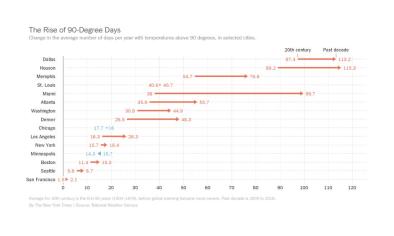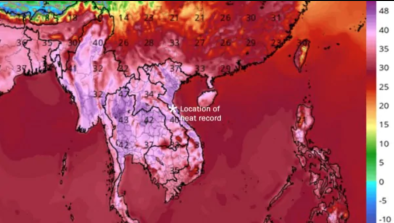Science Source
Recent warming trend in the coastal region of Qatar
- Analyzes long-term temperature-related phenomena in the eastern portion of the Middle East, focusing on the coastal region of Qatar
- Examines extreme temperature indices, as defined by the Expert Team on Climate Change Detection and Indices, for Doha, Qatar
- Compares these indices with those from neighboring countries
- Calculates trends for a 30-year period (1983–2012), using hourly data obtained from the National Climatic Data Center
- The results showed spatially consistent warming trends throughout the region
- Find that for Doha, 11 of the 12 indices studied showed significant warming trends
- Finds, in particular, that the warming trends were represented by an increase in the number of warm days and nights and a decrease in the number of cool nights and days
- Finds that the high-temperature extremes during the night have risen at more than twice the rate of their corresponding daytime extremes
- Finds the intensity and frequency of hot days have increased, and the minimum temperature indices exhibited a higher rate of warming
- States the climatic changes in Doha are consistent with the region-wide heat-up in recent decades across the Middle East
- Notes, however, the rapid economic expansion, increase of population since the 1990s, and urban effects in the region are thought to have intensified the rapidly warming climate pattern observed in Doha since the turn of the century
Related Content
Headline

Nov 18, 2021 | Climate Nexus Hot News
Number Of Hot Summer Days That Fuel Wildfire Spread Will Rise
Science Source
| Geophysical Research Letters
Evaluating the performance of past climate model projections
Zeke Hausfather, Henri F. Drake, Tristan Abbott et al
Headline

Jul 24, 2019 | New York Times
Boston Has Become New York
Headline

Apr 23, 2019 | Washington Post
Vietnam just observed its highest temperature ever recorded: 110 degrees, in April


